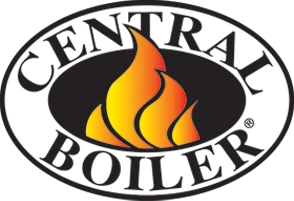Ductwork is responsible for distributing heated or cooled air throughout your home. However, if your ducts are not properly insulated, they can lose a significant amount of energy. This energy loss not only reduces the efficiency of your HVAC system but also increases your energy bills. Here are some key reasons why insulating your ductwork is essential:
Energy Efficiency
Uninsulated ducts can lose heat in the winter and gain heat in the summer, leading to a considerable loss of energy. By wrapping your ductwork with insulation, you can reduce these losses, making your HVAC system more efficient and lowering your energy consumption. Learn more about energy efficiency.
Improved Comfort
Insulated ducts help maintain consistent temperatures throughout your home. This means fewer hot or cold spots and a more comfortable living environment. Proper insulation ensures that the air reaching each room is at the desired temperature, enhancing overall comfort. Discover how insulation improves comfort.
Reduced Condensation
In humid climates, condensation can form on uninsulated ducts, leading to moisture problems such as mold growth and water damage. Insulating your ducts helps prevent condensation, protecting both your home and your health. Read about preventing condensation.
Extended HVAC System Life
When your HVAC system doesn’t have to work as hard to maintain desired temperatures, it experiences less wear and tear. This can extend the lifespan of your system, saving you money on repairs and replacements in the long run. Learn more about HVAC maintenance.
When Should You Insulate Your Ductwork?
Not all ductwork needs insulation. Here are some scenarios where insulating your ductwork is particularly beneficial:
Ducts in Unconditioned Spaces
If your ducts run through unconditioned spaces such as attics, basements, crawl spaces, or garages, they are more susceptible to temperature fluctuations. Insulating these ducts can prevent significant energy losses. Find out why insulation is important.
Visible Condensation
If you notice condensation on your ducts, it’s a sign that insulation is needed. Condensation can lead to moisture issues, mold growth, and damage to your ductwork and home. Read about condensation and moisture.
Uneven Temperatures
If some rooms in your home are consistently warmer or cooler than others, it could be due to heat loss or gain through uninsulated ducts. Insulating your ductwork can help balance the temperature distribution. Explore solutions for uneven temperatures.
High Energy Bills
If you’ve noticed a spike in your energy bills, inefficient ductwork could be to blame. Insulating your ducts can help reduce energy consumption and lower your bills. Learn more about reducing energy costs.
How to Insulate Your Ductwork
If you decide to insulate your ductwork, here’s a step-by-step guide to help you do it right:
Choose the Right Insulation
There are different types of duct insulation available, including fiberglass, foam board, and reflective insulation. Fiberglass is the most common and effective for most homes. Ensure the insulation material has the appropriate R-value (thermal resistance) for your climate. Learn about insulation types.
Clean the Ducts
Before wrapping your ducts, clean them to remove any dust, dirt, or debris. This ensures the insulation adheres properly and maximizes its effectiveness. Read about duct cleaning.
Measure and Cut the Insulation
Measure the length and circumference of your ducts to determine how much insulation you’ll need. Cut the insulation to size, allowing for a snug fit around the ducts. Find tips on measuring insulation.
Wrap the Ducts
Wrap the insulation around the ducts, making sure it covers all sides. Use duct tape or insulation fasteners to secure the insulation in place. Ensure there are no gaps or exposed areas. Explore wrapping techniques.
Seal the Joints
Seal any joints, seams, or connections with foil tape or mastic sealant. This prevents air leaks and ensures the insulation is effective. Learn about sealing techniques.
Check for Gaps
After wrapping and sealing, check for any gaps or areas that might need additional insulation. Address these areas to ensure complete coverage. Read more about checking insulation.
Conclusion
Wrapping your ductwork can be a worthwhile investment, offering significant benefits in terms of energy efficiency, comfort, and HVAC system longevity. If your ducts are located in unconditioned spaces, show signs of condensation, or contribute to uneven temperatures and high energy bills, insulating them is a smart move. By following the proper steps and using the right materials, you can improve your home’s comfort and reduce your energy costs.









